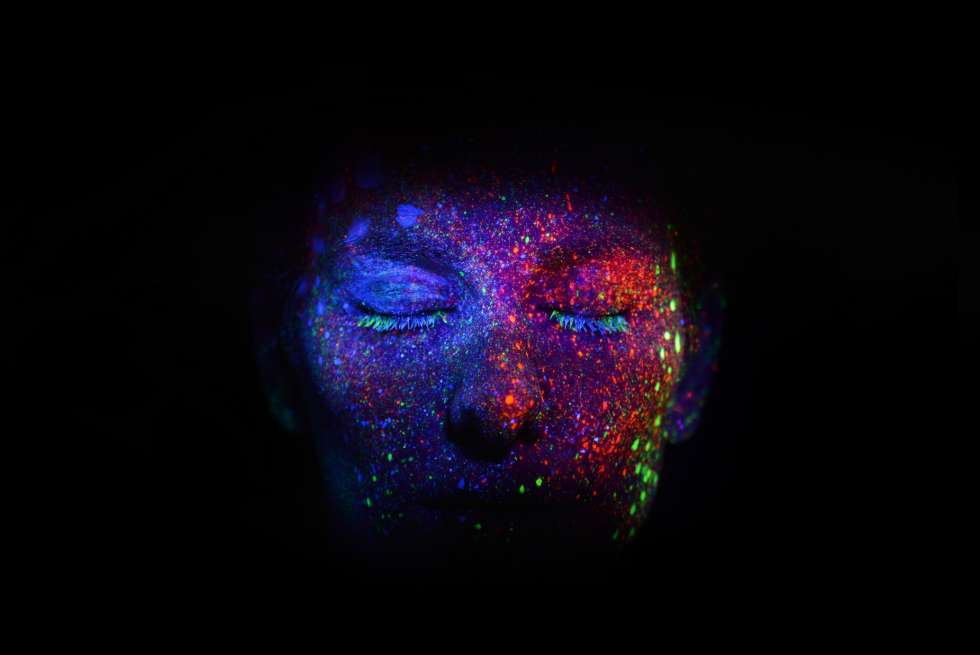Petroleum
From the Series: Lexicon for an Anthropocene Yet Unseen
From the Series: Lexicon for an Anthropocene Yet Unseen

The film Petroleum Dreaming was composed in 2014 for a screening of the Karrabing Film Collective’s When the Dogs Talked at the Oslo National Academy of Fine Arts. It was one of three shorts that appeared on thirty- by fifteen-inch monitors at the periphery of the main screen. The other two were Barbed Wire Dreaming and Queer Dreaming. Barbed Wire Dreaming extracts several long shots without dialogue from When the Dogs Talked, shots that show Karrabing walking alongside or through barbed wire fences and drifting on a broken boat in the open sea. Queer Dreaming mashed up various contemporary gay performances with a butoh troupe performance at a Paris café. Petroleum Dreaming was inspired by and built around the gorgeous short, Train Story One: The South Coast Line. Train Story One is interspersed with a series of commercials, activist videos, and aquatic films. Each of these films was conceptualized as a hypertext, internal if peripheral to the action on the screen. Each individual film creates, through the blending of multiple film and digital objects, its own set of internal hypertexts. The idea is that the entire set of films create a recursive structure of extimate textuality. There is nothing outside the text, but the text is not inside itself (see Derrida 1998; Foucault 1977).
Because of the context—namely, the screening of When the Dogs Talked—all three shorts use the term dreaming to suggest the scarred homology between critical theoretical approaches to the unconscious and Karrabing analytics of the sentient landscape. What, the shorts asked, might be the unconscious of a train, a train track, and the landscape flowing past the windows if all of them were freed from the logos-based logic of critical approaches to the unconscious—both the Freudian unconscious and the Lacanian Symbolic? And how might the concept of the unconscious be visualized in a posthuman, postlife critical space? The Karrabing understand their communication with human and nonhuman materialities to include linguistic extrudences but also, and perhaps more fundamentally, other bodily extrudents like sweat and sensation. Thus Petroleum Dreaming and the two other short films contain very few linguistic phenomena, and any linguistic fragments are intended to be experienced as artifacts of the same order as the sound of the train whistle and the grinding of giant, earth-moving gears.
I was the author of these short films. But this was not the only occasion that the Karrabing Film Collective has used supplemental texts to provide a discursive counterpoint to the screening of their films. Natasha Lewis has taken the lead on several collective installation projects under the general project of Toxic Sovereignties that have been shown alongside our films at the Melbourne Gertrude Contemporary, Brisbane Institute of Modern Art, and New York’s e-flux gallery. All are part of an emergent Indigenous Futurism whose temporality lies in the (non)endurant hereish. Thus, the future is not in the future, but in the myriad contradictions that cannot endure the present intersection and thus open the here to somewhere else. Of particular interest to the Karrabing is how Indigenous sovereignty is re-emerging in the space of utter state abandonment and total capital despoilment. Slag heaps and toxic landscapes become the place where the settler is excluded, or even tries to remove himself. What is it to be sovereign over a wasted earth? A place where the Indigenous can safely be free only because those who have made it toxic fear to tread there? What forms of existence can be held onto and which ones will be reshaped in this Anthropocenic otherwise?
Derrida, Jacques. 1998. Of Grammatology. Translated by Gayatri Chakravorty Spivak. Baltimore, Md.: John Hopkins University Press. Originally published in 1967.
Foucault, Michel. 1977. “What Is an Author?” In Language, Counter-Memory, Practice: Selected Essays and Interviews by Michel Foucault, edited by Donald Bouchard, 113–38. Ithaca, N.Y.: Cornell University Press.